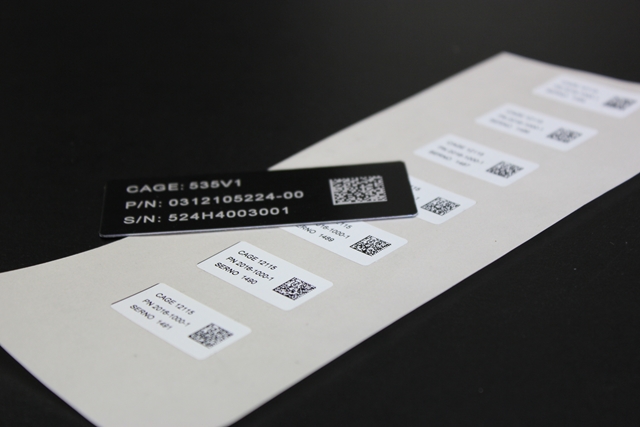Which MIL STD 130 Marking Method is Right for You?
When selling goods to the U.S. Military, you must mark them with permanent identifying information, such as the serial number, part or batch number, enterprise identifier (EID), and barcode. The Military Standard 130, also known as MIL STD 130, sets the standard practices for marking military property, which includes a variety of allowable marking methods. In this article, we’ll share what MIL STD 130 marking methods must accomplish, outline allowable marking methods and locations, and suggest strategies to determine which method is best for your situation.
What MIL STD 130 marking methods must accomplish
According to MIL STD 130, all marking methods must leave a permanent identifier on a U.S. Military-bound product. The markings must withstand even the most rigorous conditions, including the extreme cold of an Alaskan military base and the scorching heat of a Middle Eastern desert. Additionally, the marking must tolerate any cleaning processes that are standard for that piece of military property. The marking method you choose must be a substantial enough process to meet these stringent MIL STD 130 requirements.
To summarize, allowable MIL STD 130 marking methods must:
- Be a substantial process to create a permanent identifier
- Hold up under extreme conditions
- Tolerate standard cleaning processes
8 Types of MIL STD 130 marking methods
While not an exhaustive list, the following eight MIL STD 130-grade marking methods are among the most widely accepted for uniquely identifying U.S. Military property. All these methods require state-of-the-art imaging and printing technologies to achieve a permanent marking designed to meet the exacting U.S. Military specifications.
- Laser engraving
- Laser marking
- Dot peen engraving
- Photo anodizing
- Abrasive blasting
- Rotary engraver
- Acid etching
- Metal stamping
These commonly used MIL STD 130 marking methods perform exceptionally well for achieving a long-lasting mark that can stand up to extreme environmental conditions and standard product cleaning procedures.
MIL STD 130 marking locations
When using any of these marking methods to identify U.S. Military property, the marking must appear in one of these locations:
- On a metal or stiff plastic identification tag or label, securely fastened to the product, or
- Directly applied to the surface of the product
The marking must also be placed in a visible location whenever possible for easy reading and bar code scanning.
If you’re interested in learning more about MIL STD 130 marking methods or marking placement, reach out to our expert team.
How to choose the best MIL STD 130 marking method
With all MIL STD 130 marking methods considered substantial enough processes to leave a permanent identifier on the tag or label, even when exposed to extreme conditions, how do you choose the best method for your product?
According to the MIL STD 130 marking standard, the best tag and label marking method depends on three critical factors:
- The type of product
- The product’s intended use
- The environment in which a product will be used
These three deciding factors can help narrow the choices and reveal the most suitable marking method for your unique product. If you’re not sure how to choose the best process for your product, connect with our MIL STD 130 marking experts to learn more.
Quality counts
No matter which MIL STD 130 marking method you choose, ensure the manufacturer you choose follows a comprehensive quality control process to ensure your goods comply with the requirements and specifications for U.S. Military property.
Whether your company sells goods to the Department of Defense (DoD) or demands the same level of durability and excellence, contact us for personalized assistance selecting the best marking method for you. Our vast knowledge and experience with the MIL STD 130 marking standards will help ensure your goods are compliant with these military identification requirements.
